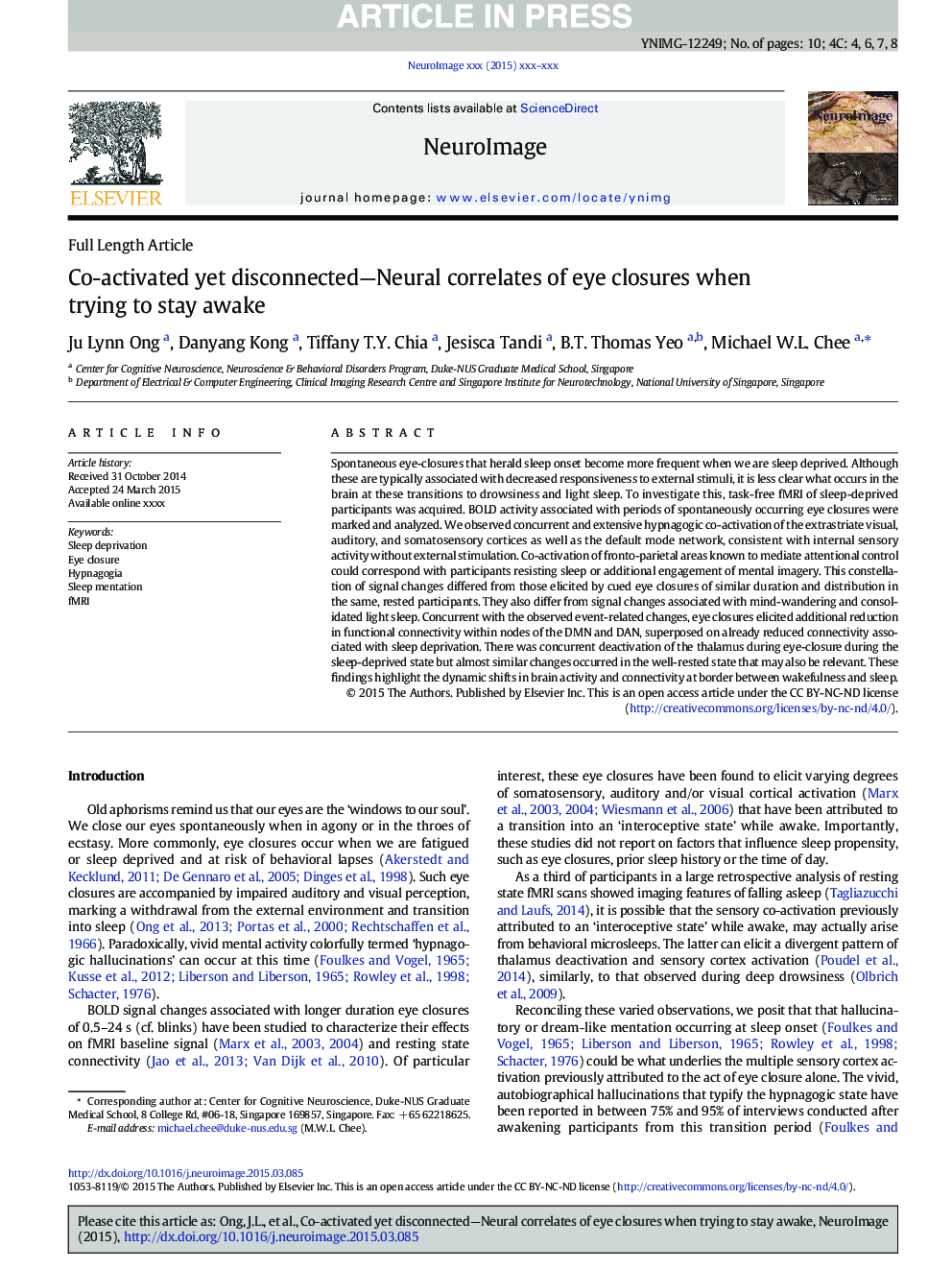| Article ID | Journal | Published Year | Pages | File Type |
|---|---|---|---|---|
| 6025175 | NeuroImage | 2015 | 10 Pages |
Abstract
Spontaneous eye-closures that herald sleep onset become more frequent when we are sleep deprived. Although these are typically associated with decreased responsiveness to external stimuli, it is less clear what occurs in the brain at these transitions to drowsiness and light sleep. To investigate this, task-free fMRI of sleep-deprived participants was acquired. BOLD activity associated with periods of spontaneously occurring eye closures were marked and analyzed. We observed concurrent and extensive hypnagogic co-activation of the extrastriate visual, auditory, and somatosensory cortices as well as the default mode network, consistent with internal sensory activity without external stimulation. Co-activation of fronto-parietal areas known to mediate attentional control could correspond with participants resisting sleep or additional engagement of mental imagery. This constellation of signal changes differed from those elicited by cued eye closures of similar duration and distribution in the same, rested participants. They also differ from signal changes associated with mind-wandering and consolidated light sleep. Concurrent with the observed event-related changes, eye closures elicited additional reduction in functional connectivity within nodes of the DMN and DAN, superposed on already reduced connectivity associated with sleep deprivation. There was concurrent deactivation of the thalamus during eye-closure during the sleep-deprived state but almost similar changes occurred in the well-rested state that may also be relevant. These findings highlight the dynamic shifts in brain activity and connectivity at border between wakefulness and sleep.
Related Topics
Life Sciences
Neuroscience
Cognitive Neuroscience
Authors
Ju Lynn Ong, Danyang Kong, Tiffany T.Y. Chia, Jesisca Tandi, B.T. Thomas Yeo, Michael W.L. Chee,
